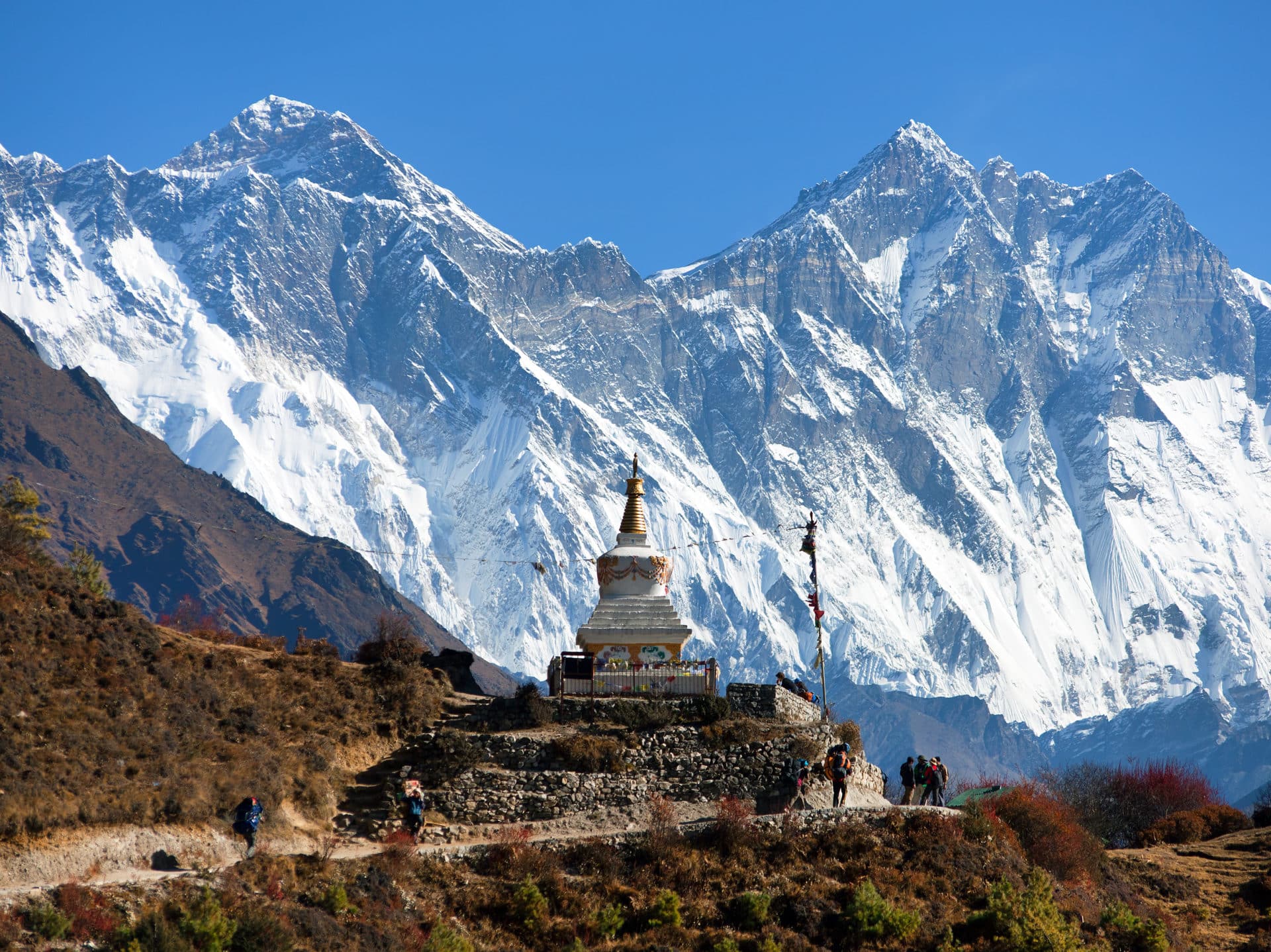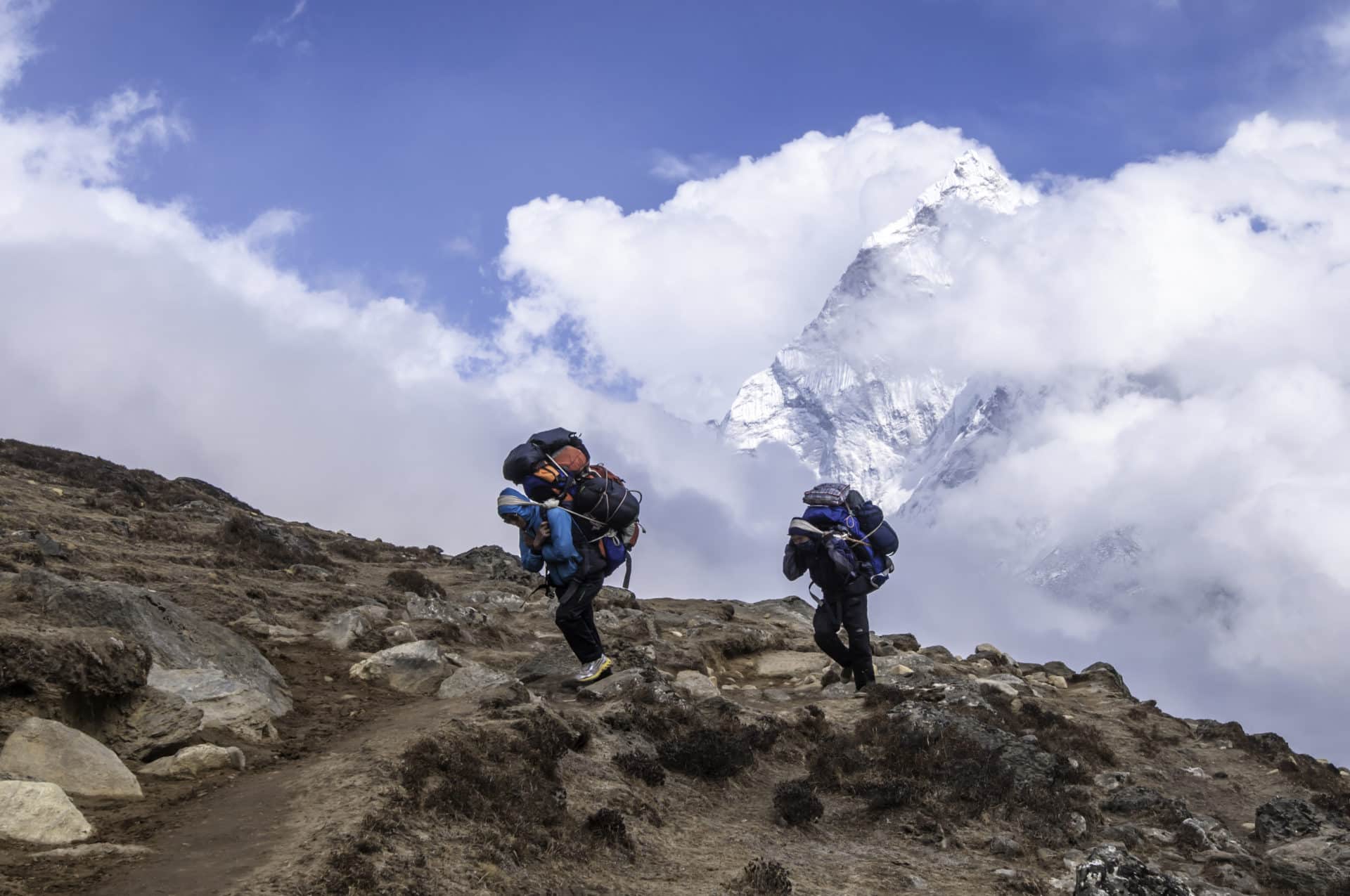When exploring places at higher altitudes, trekkers can experience altitude sickness, which can be very dangerous and should be taken seriously. While it can be treated, prevention is always the best option, so here we will share the signs of altitude sickness and how to prevent it.
What is altitude sickness?
There are a lot of misconceptions around altitude sickness – most important of all about what it actually is.
Altitude sickness – otherwise known as acute mountain sickness (AMS) is a disorder that people can experience at high altitude if they have not properly acclimatised.
This is not the same as feeling the normal effects of altitude as you would expect to – such as mild headaches, slight shortness of breath and nausea. Altitude sickness is the extreme version of this, and it needs to be taken seriously.
It is possible to get altitude sickness anywhere above 2,700 metres.
However, the following symptoms could suggest that the altitude sickness has progressed in severity, and there may be fluid in the lungs:

Symptoms of Acute Mountain Sickness (AMS)
Acute Mountain Sickness is also known as “Altitude Sickness”. As the name implies, it’s an illness that commonly occurs at exceptionally high altitudes, such as Everest Base Camp or Island Peak.
AMS can be effectively treated by immediately taking the affected climber to a lower altitude. Usually, a drop in altitude of about 500m will be sufficient to stop the common symptoms of AMS, including:
- Headaches
- Loss of appetite
- Nausea
- Exhaustion
- Lassitude
- Insomnia
- Rapid pulse
- Swelling of the hands and feet
- Reduced urine output
The best way to minimise the severity of the illness is by maintaining a slow, steady pace from day one of your trek. Ideally, you’d add in extra rest days to acclimatise to the higher altitudes as you go, and you should also be drinking at least 3-4 litres of clean water every day throughout your trekking.
There are also preventive medicines available, such as Diamox, but do check with your doctor before stocking up.
I honestly can’t urge you enough to take altitude sickness seriously.
When left unchecked, High altitude cerebral edema (HACE) or High altitude pulmonary edema (HAPE) can occur (see below). These conditions can affect the lungs and prevent effective oxygen exchange, or it may affect the brain and cause the swelling of the brain tissue.
So you really must not ignore the symptoms of AMS, as the consequences may be lethal.
Realistically, around 60% of all climbers will suffer to some extent from AMS, so make sure you familiarise yourself with this condition and take preventative care. Here’s how it can manifest:

AMS can be effectively treated by immediately taking the affected climber to a lower altitude.
Mild AMS
Symptoms of Mild AMS include:
- Headaches
- feeling tired and fatigued
- loss of appetite
- shortness of breath
- swelling of hands and feet
- stomach upset
- nausea
- dizziness
- pins and needles
- inability to sleep
Moderate AMS
Symptoms of moderate AMS include:
- severe headaches that aren’t relieved by medication
- increasing weakness and fatigue
- nausea and vomiting
- shortness of breath
- decreased coordination (Ataxia).
Severe AMS
Symptoms of severe AMS will cause:
- shortness of breath even at rest
- inability to walk
- decreasing mental status
- build-up of fluid in lungs or brain swelling
The only way to cure the symptoms is to receive medical attention and to return to a lower altitude immediately.
High Altitude Pulmonary Edema (HAPE) and High Altitude Cerebral Edema (HACE) are life-threatening conditions that are associated with altitude sickness and they occur when a climber hasn’t been able to acclimatise properly.

High Altitude Pulmonary Edema (HAPE)
HAPE occurs when fluid is built up in the lungs, preventing effective oxygen exchange. The level of oxygen in the bloodstream decreases as the condition becomes more severe meaning that cyanosis, impaired cerebral function and even death can all occur.
Symptoms of High Altitude Pulmonary Edema (HAPE) include:
- Tightness in the chest
- A persistent cough bringing up white, watery, or frothy fluid
- Shortness of breath at rest
- Marked fatigue and weakness
- A feeling of impending suffocation at night
- Confusion and irrational behaviour
In cases of HAPE, it’s crucial to descend to about 2,000 feet (600m) immediately, as this is the most effective life-saving measure. Anyone suffering from HAPE must be evacuated to a medical facility for proper follow-up treatment.
High Altitude Cerebral Edema (HACE)
This condition occurs as a result of the swelling of brain tissue from fluid leakage. Symptoms
Anyone suffering from HAPE must be evacuated to a medical facility for proper follow-up treatment.
include:
- Weakness
- Headache
- Disorientation
- Loss of coordination
- Loss of memory
- Decreasing levels of consciousness
- Hallucinations and psychotic behaviour
- Coma
High Altitude Cerebral Edema (HACE) is rapidly fatal unless the affected person takes immediate descent and evacuation to a medical facility for follow-up treatment.

Using Diamox for Altitude Sickness
The question I probably get asked the most from people wanting to trek to Altitude is: should I take Diamox (aka Acetazolamide)?
Diamox is prescribed for conditions such as Glaucoma, Sleep Apnea, Epilepsy and Hypertension. It’s now commonly prescribed by doctors to prevent Acute Mountain Sickness (AMS) too.
Diamox is a Diuretic (promoting the production of urine) and a Prophylactic. It should be taken from the day before you start your climb until you start to descend.
It’s used as a preventative measure not a cure and, as a Carbonic Anhydrase inhibitor, it promotes the excretion of bicarbonate through urination.
But how does that help with altitude sickness?
Excretion of bicarbonate increases the acidity of the blood, which in turn makes our bodies assume we have increased CO2.
Our bodies respond to the imaginary excess by breathing quicker and heavier to get rid of the CO2. The rapid breathing increases the amount of oxygen received by the blood, thus helping with the acclimatisation process and at the same time preventing the onset of AMS.
PLEASE NOTE: Diamox does not cure the symptoms of AMS. Once AMS has started, the only way to stop it is to descend.
Should I Use Diamox to Prevent Altitude Sickness?
Now, I’m no doctor, but in my honest opinion, the answer is yes.
You’ve just spent a lot of money on your trip to Nepal and your climb of Everest Base Camp.
Diamox does not cure the symptoms of AMS. Once AMS has started, the only way to stop it is to descend.
So if taking some tablets can increase your chances of standing high, looking at Mount Everest, why not take them?
The important thing is to consult your GP or travel clinic first whilst considering Diamox for your trip. They know your past medical history and can give you the exact advice you need.
Just remember, Diamox is not suitable for pregnant or people with liver or kidney issues.
You can always try taking Diamox prior to your trip too, to see if you get any side effects.
If you choose to do this, only take it for two or three days several weeks before your trip and make sure you won’t fall foul of any of the side effects. Diamox generally comes in a 250mg tablet, and I’d recommend taking ½ after breakfast and ½ after your evening meal.
What are the side effects of Diamox?
- Frequent urination. This is what we want it to achieve. It’s one reason why I advise taking the tablet in two halves. You don’t want to be taking a full tablet before bed!
- Numbness and tingling in the fingers, toes and face. This is easy to spot and often feels like bad pins and needles. These symptoms are lower with a milder dose.
- Taste alterations (i.e. When foods taste different to how they normally do.)
- Photosensitivity. This is the tendency to sunburn more easily, and can be combated by heavy hat usage and sunscreen!
- Nausea, vomiting and diarrhoea. These symptoms are rare and a warning signal that Diamox isn’t for you. They’re also symptoms of AMS, which could cause your guides to misdiagnose you and send you down the mountain unnecessarily.
- Confusion and drowsiness. Again these are rare, but they’re also symptoms of AMS and another warning signal against taking Diamox.
The decision is yours – but please do make sure you do your own research and speak to a GP before making up your own mind.
If high altitude trekking is on your Bucket List – Check out all of our trips here

 Basket
Basket




